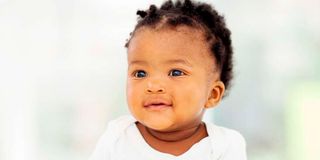What could be causing hair loss in your child?

Untreated scalp injury can harm the underlying structures and result in permanent hair loss if not addressed quickly.
What you need to know:
- Hair loss is common among children and its causes include infections, stress, and hair tension.
- Treatments for hair loss in children are available. Work with your child’s doctor to find a solution.
- When children do not get enough vitamins, minerals, and protein, their hair can fall out
While it may not be strange for older adults to lose hair, hair loss in children can be alarming. The most common cause of hair loss in children is scalp ringworm, a curable fungal infection.
Many causes of hair loss in children aren’t life-threatening or dangerous. Still, hair loss can be detrimental to a child’s emotional well-being.
Causes and treatment of hair loss in children
Scalp ringworm
Ringworm is a common, infectious fungal infection of the skin. When it affects a child’s scalp, itchy spots or red patches may appear. In addition, you may notice that your child is scratching or rubbing their scalp. Fever and swollen glands are some of the possible symptoms.
Scratching can infect and damage the scalp, leading to the hair falling out. The doctor may recommend antifungal cream and oral medication. When the ringworm clears, the hair should start growing back.
Alopecia areata
Here, the immune system attacks hair follicles. Sometimes it can cause complete baldness or thin hair.
Many children experience periods of hair loss, followed by regrowth periods.
Alopecia areata has no cure. However, prescription medications can stop the body from attacking hair follicles.
With proper treatment, most kids with alopecia areata will regain their hair within a year.
Hair Pulling
Children may physically damage hair follicles by pulling or twisting their hair, causing it to fall out. This is known as trichotillomania, a condition in which children tear out their hair.
Some children do this as a sort of release. Others aren’t even aware that they’re doing it. Because hair pulling is a signal of anxiety, it’s critical to address the underlying reason. Medication, emotional support, and counseling can help a child. When they stop pulling out their hair, it should regrow.
Traction alopecia
This type of hair loss occurs when the hair follicles experience long-term tension or pulling, such as wearing tight braids or ponytails.
Itchy, red scalp with huge bald or thinning areas is possible. This is because the hair loss tends to concentrate on the areas where there is a lot of pressure.
Traction alopecia should go away on its own with a looser hairstyle, but it can take time for the hair to grow back. If a child with this type of hair loss develops an infection, the doctor may recommend antibiotics.
Scalp Injury
A scalp injury — such as a burn or a violent blow to the head — can damage hair follicles. It results in significant hair loss in the injured area. However, when the wound heals, the hair should regrow.
Untreated scalp injury can harm the underlying structures and result in permanent hair loss if not addressed quickly.
Telogen effluvium
Telogen effluvium is temporary hair loss that occurs after a severe incident, such as very high fever, surgery, intense emotional trauma, or severe injury.
In kids with telogen effluvium, more hair follicles fall into the telogen phase than average. So instead of losing hair, as usual, kids lose more hair a day. Once the event is over, the child’s hair should grow back.
Nutritional deficiency
Good nutrition is essential for a healthy body. When children do not get enough vitamins, minerals, and protein, their hair can fall out. Lack of iron, zinc, protein and amino acids can contribute to hair loss.
Your child’s doctor can recommend a healthy diet plan or prescribe a supplement to make up for the nutritional deficiencies.
Nonmedical causes of hair loss
- Newborn hair loss. Most babies lose their hair in the first few months of life, and their hair is replaced with permanent hair.
- Rubbing. Many babies have baldness as a result of friction with a mattress or car seat. When your baby starts sitting up, any hair should grow.
- Hair abuse. Brushing or pulling the hair on a tight pony or braids can cause it to fall out. Being gentle with the hair will allow it to grow back.




